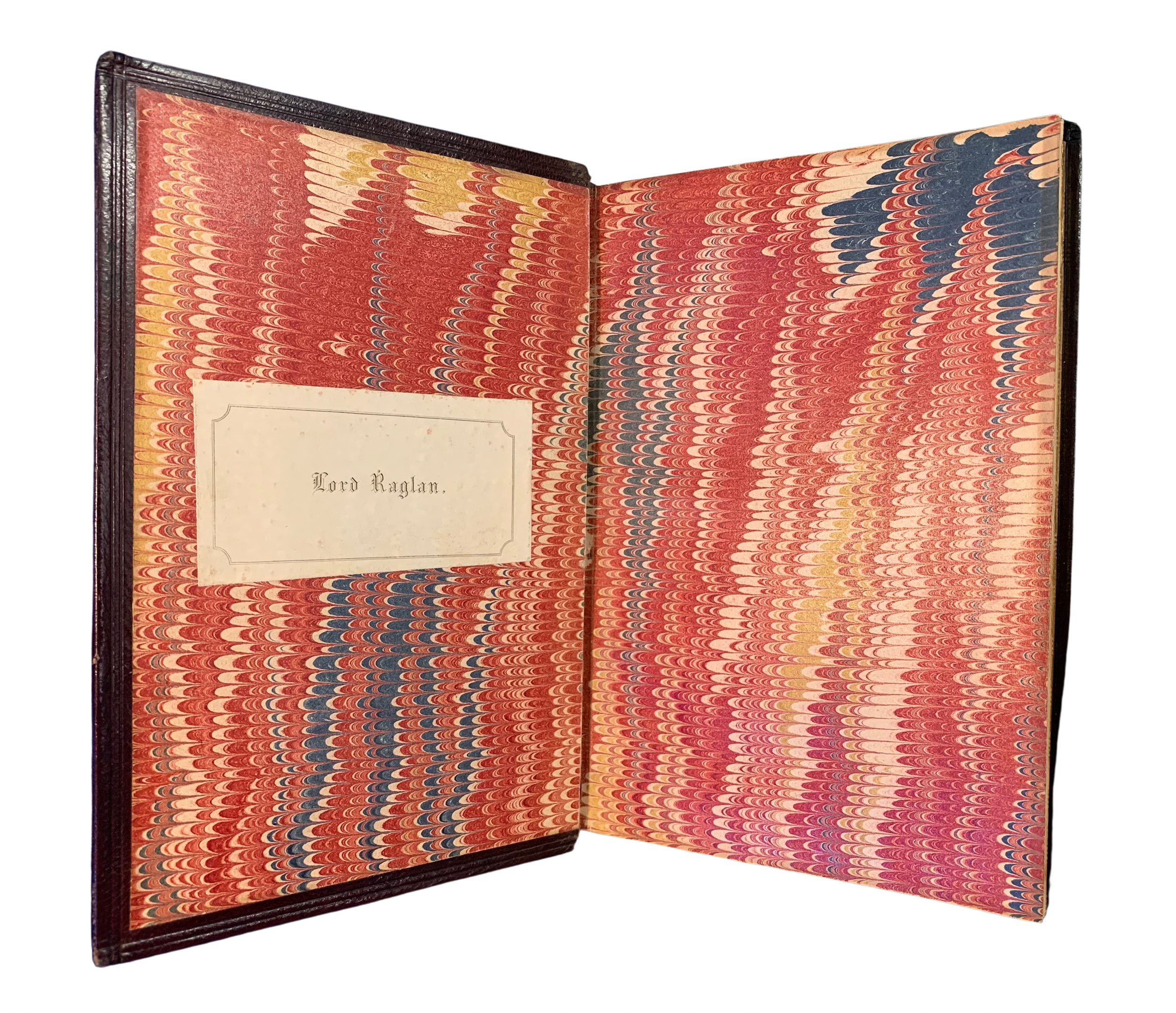Views in Orkney, And On The North Eastern Coast of Scotland by Anon [Elizabeth, Countess of Sutherland].



Views in Orkney, And On The North Eastern Coast of Scotland by Anon [Elizabeth, Countess of Sutherland].
First edition, Privately Printed in a run of 120 copies only. Folio. 27pp text, with 43 etchings (as called for) with tissue guards. Bound in contemporary full tree calf decorated and ruled in gilt with a large gilt central ellipse, by Scott of Edinburgh. Later restoration to the binding has involved strengthening of corners, extremities, and a full respine with the original spine laid on. The work was done a while ago, and was very professionally executed, leaving the binding strong, solid, and still remarkably handsome. Internally clean, with some gloriously wide margins, a set of ink initials (C.L.S.) to the front pastedown, and a large note pasted to the front flyleaf detailing the origins and provenance of the book:
“This volume belonged to Frances, Lady Douglas, sister of the 2nd Duke of Buccleuch, and Wife of Archibald, 1st Lord Douglas (Son of 1st Marquess of Douglas), created Peer 1790, of Douglas House, Petersham. The C.L.S. opposite is Caroline Lucy Scott, Daughter of the above Lord and Lady Douglas, and wife of Admiral Sir George Scott of Gala. Lady Douglas was born in 1752. The Douglas Library [where this copy entered trade] was sold in 1931, at Petersham. M.H.G.”
Elizabeth, Countess of Sutherland, as is evidenced by this work, was an accomplished and skilled artist, that much is undeniable. This accomplishment has been rather overshadowed by her role in the incredibly damaging and inhumane uprooting and impoverishment of thousands of her native Scottish tenants through the process of mass family eviction that is now known as The Highland Clearances. The historic occupants of the Sutherland estates, traditionally smallholder tenants, crofters, and the like, were evicted en masse, men, women and children, to make way for “agricultural improvements” in the shape of highly profitable sheep farms and other projects not native to the area, but guaranteed to swell the coffers of the Countess’ estates. In part, this highly skilled and evocative collection of engravings, perfectly capturing the lonely and awe inspiring remoteness of the Orkneys, was only enabled by a lifestyle of leisure and freedom that was directly funded by the misery of the very people whose land she so ably documented artistically. One of the most challenging exercises in separating the art from the artist we have thus far encountered.
The identity of M.H.G. is unknown, but they clearly knew their stuff; a beautifully executed collection of etchings from an aristocratic origin, and with an equally aristocratic provenance. Scarce, and complicated.







